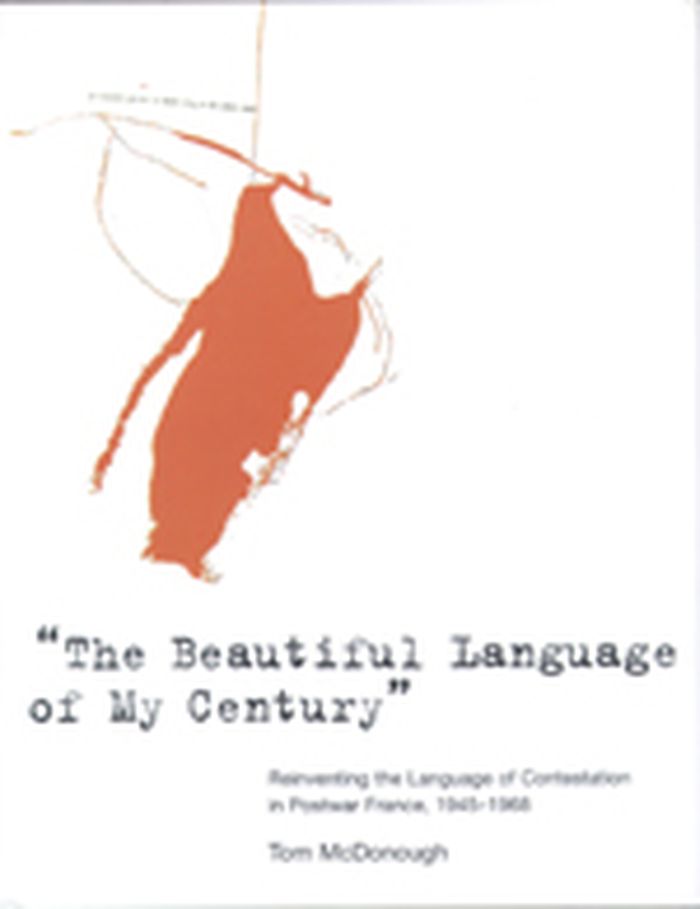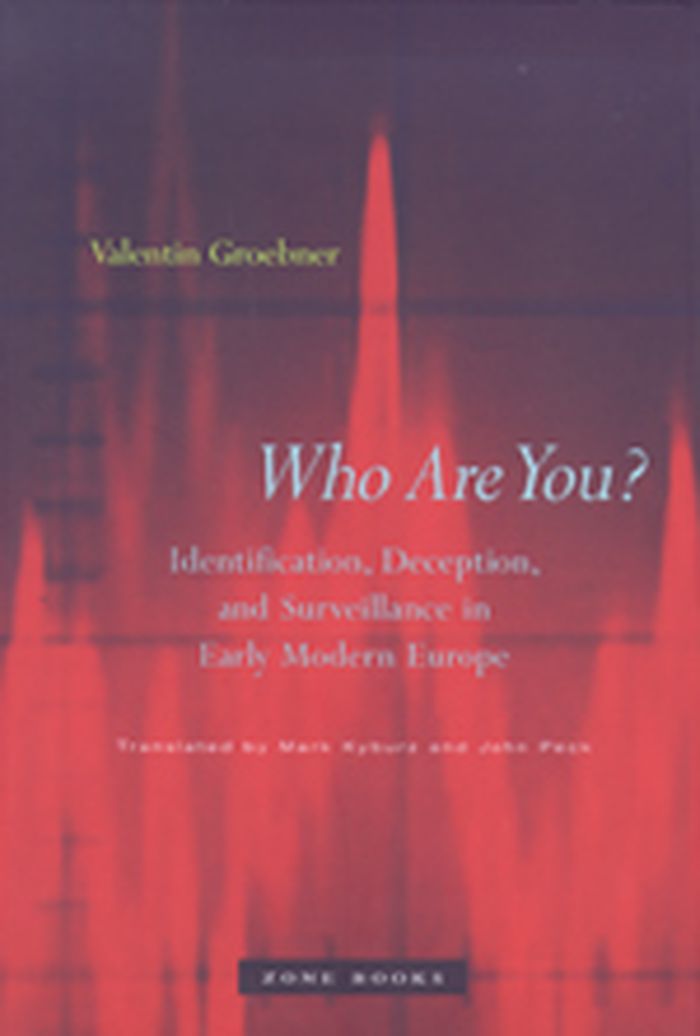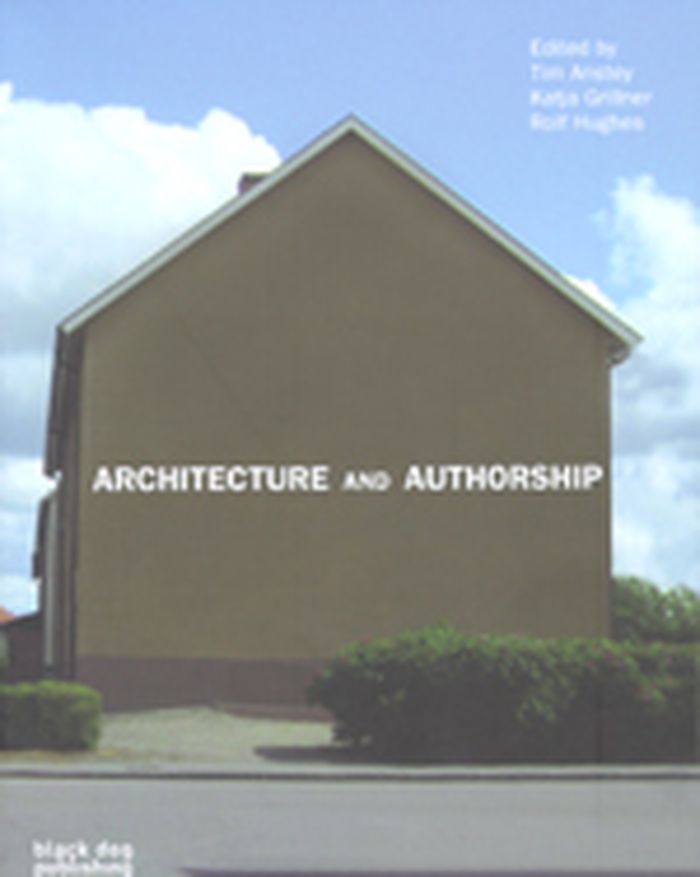books
All we need
$39.95
(available to order)
Summary:
On the occasion of Luxemburg European Capital of Culture 2007, the exhibition All We Need is being mounted on the subject of needs, resources, and fairness. The exhibition’s point of departure is the ten needs of every person as formulated by the economist Manfred Max-Neef: subsistence, protection, affection, participation, recreation, creativity, understanding, identity,(...)
All we need
Actions:
Price:
$39.95
(available to order)
Summary:
On the occasion of Luxemburg European Capital of Culture 2007, the exhibition All We Need is being mounted on the subject of needs, resources, and fairness. The exhibition’s point of departure is the ten needs of every person as formulated by the economist Manfred Max-Neef: subsistence, protection, affection, participation, recreation, creativity, understanding, identity, freedom, and transcendence. Each of these needs has a single area of the exhibition devoted to it: Survive, Protect, Love, Stand Up, Relax, Create, Understand, Choose, Dream. The book mirrors the exhibition with photographs and texts and provides additional windows on the complex subject with introductory texts on the exhibition, resources, and fairness. An extensive collage of texts and images illustrates the needs, supplemented by journalistic and art-historical images and philosophical quotations that do not appear in the exhibition itself. The catalogue is designed by the well-known graphic designer Emanuel Tschumi.
books
June 2007, Luxembourg
Architectural Theory
books
Rudy Ricciotti : HQE
$11.95
(available to order)
Summary:
Un texte rebelle face au diktat inacceptable théorisé par les technocrates à l'heure de l'environnement prétexte. Un cri de colère et de révolte. Un pamphlet brûlant et dérangeant. Une remise à plat, sans faux plis, de l'expertise environnementale et de ses génuflexions serviles. Grand Prix National d'architecture 2006, Rudy Ricciotti part en guerre contre le pervers et(...)
Rudy Ricciotti : HQE
Actions:
Price:
$11.95
(available to order)
Summary:
Un texte rebelle face au diktat inacceptable théorisé par les technocrates à l'heure de l'environnement prétexte. Un cri de colère et de révolte. Un pamphlet brûlant et dérangeant. Une remise à plat, sans faux plis, de l'expertise environnementale et de ses génuflexions serviles. Grand Prix National d'architecture 2006, Rudy Ricciotti part en guerre contre le pervers et périlleux syndrome HQE. Trois lettres glacées pour signifier aux élus et aux maîtres d'œuvre le label «Haute Qualité Environnementale». «Avant fermeture définitive de la raison», comme il l'écrit avec rage, Rudy Ricciotti apporte sa réponse à un maire confronté aux héritiers d'Ubu et de Kafka. Sans se préoccuper des appréciations oiseuses des sempiternels petits marquis de la culture - ce qui peut aller du banal «trublion sudiste» au troublant «social traître» -, Rudy Ricciotti engage la polémique avec la terrifiante radicalité qui lui est coutumière. Et naturellement, il défend le béton et le rude, face aux maniéristes et aux idéologues abscons de la norme environnementale. En filigrane lumineux à son argumentation belliqueuse et rigoureuse, Ricciotti dénonce la prise en otage de la légitimité démocratique par la technocratie. Et il désigne du regard les ridicules et leurs thuriféraires niais.
books
March 2007, Marseille
Architectural Theory
$39.95
(available to order)
Summary:
In postwar France, the aesthetics of appropriation and collage gave cultural form to a struggle over meaning. A new wave of avant-garde experimentation used - or stole, plagiarized, and expropriated - elements from advertising, journalism, literature, art, and other sources of common discourse (the ironically named "beautiful language" of this book's title, itself an(...)
February 2007, Cambridge (MA)
The beautiful language of my century : reinventing the language of contestation in postwar France, 1945-1968
Actions:
Price:
$39.95
(available to order)
Summary:
In postwar France, the aesthetics of appropriation and collage gave cultural form to a struggle over meaning. A new wave of avant-garde experimentation used - or stole, plagiarized, and expropriated - elements from advertising, journalism, literature, art, and other sources of common discourse (the ironically named "beautiful language" of this book's title, itself an appropriation from Guy Debord's collaged Mémoires). Redeployed, often in startling or pointed juxtapositions, these elements took on newly oppositional meanings. A famous photograph taken inside the occupied Sorbonne in May 1968, for example, shows a massive academic painting altered by a clever cartoonish speech bubble that transforms the painting into a parody of itself and memorializes an event very different from the one captured by the original artist."The beautiful language of my century" describes the various forms of critical culture that culminated in the events of May 1968, and investigates the ways those forms have come down to us today. McDonough explores the montage practice developed by Guy Debord and his situationist colleagues under the name of détournement and its expression in the later fifties as a form of cultural theft. He addresses the influence of colonialism on these practices, examining a 1961 exhibit of torn posters of the Algerian War ("La France déchirée"), Godard's early film Le Petit Soldat, and Christo's Project for a Temporary Wall of Steel Drums. He discusses the French left's adoption in the mid-sixties of the "end of art" as a theoretical position and describes the leftist idea of the fête as a Rabelaisian and revolutionary upwelling of everything that is low. This influential conception, inspired equally by the American urban revolts of the sixties and the writings of theorists Marcel Mauss and Georges Bataille, coalesced into a new image of revolution, a new model of contestation, in the events of May 1968 - when the struggle over language and culture merged with a broader resistance to capitalist modernization.
books
$18.95
(available to order)
Summary:
In this fascinating book, Edward Said looks at the creative contradictions that often mark the late works of literary and musical artists.
On late style : music and literature against the grain
Actions:
Price:
$18.95
(available to order)
Summary:
In this fascinating book, Edward Said looks at the creative contradictions that often mark the late works of literary and musical artists.
books
April 2007, New York
$32.50
(available to order)
Summary:
Who are you? And how can you prove it? How were individuals described and identified by people who had never seen them before, in the centuries before photography and fingerprinting, in a world without centralized administrations, where names and addresses were constantly changing? In "Who are you?", Valentin Groebner traces the early modern European history of(...)
Who are you? : identification, deception, and surveillance in early modern Europe
Actions:
Price:
$32.50
(available to order)
Summary:
Who are you? And how can you prove it? How were individuals described and identified by people who had never seen them before, in the centuries before photography and fingerprinting, in a world without centralized administrations, where names and addresses were constantly changing? In "Who are you?", Valentin Groebner traces the early modern European history of identification practices and identity papers. The documents, seals, stamps, and signatures were — and are — powerful tools that created the double of a person in writ and bore the indelible signs of bureaucratic authenticity. Ultimately, as Groebner lucidly explains, they revealed as much about their makers’ illustory fantasies as they did about their bearers’ actual identity. The bureaucratic desire to register and control the population created, from the sixteenth century onward, an intricate administrative system for tracking individual identities. Most important, the proof of one’s identity was intimately linked and determined by the identification papers the authorities demanded and endlessly supplied. At the same time, these papers and practices gave birth to two uncanny doppelgängers of administrative identity procedures : the spy who craftily forged official documents and passports, and the impostor who dissimulated and mimed any individual he so disired. Through careful research and powerful narrative, Groebner recounts the complicated and bizarre stories of the many ways in which identities were stolen, created, and doubled. Groebner argues that identity papers cannot be interpreted literally as pure and simple documents. They are themselves pieces of history, histories of individuals and individuality, papers that both document and transform their owner’s identity — from Renaissance vagrants and gypsies to the illegal immigrants of today who remain "sans papiers", without papers.
Architectural Theory
Architecture and authorship
$48.00
(available to order)
Summary:
Architecture and Authorship comprises 17 essays, encompassing a variety of contemporary and historical case studies, which explore issues of authorship, ownership and "copyright" in architecture. The book documents how, from the fifteenth century onwards, individual architects and movements have endeavoured to maintain their status by defending what they see as their own(...)
Architectural Theory
June 2007, London
Architecture and authorship
Actions:
Price:
$48.00
(available to order)
Summary:
Architecture and Authorship comprises 17 essays, encompassing a variety of contemporary and historical case studies, which explore issues of authorship, ownership and "copyright" in architecture. The book documents how, from the fifteenth century onwards, individual architects and movements have endeavoured to maintain their status by defending what they see as their own unique territory -- the origins and intentions of their work, and their signature style. Written contributions from international experts in architecture and art history cover a variety of fascinating topics, including domestic space; eighteenth century landscape gardens; the Berlin of the late nineteenth and early twentieth century; and postmodernism and the "Death of the Author;" as well as exploring the work of luminaries from Ernst Neufert and Cedric Price to Rem Koolhaas. Architecture and Authorship is a lavishly illustrated alternative look at the history and culture of architecture, and the thought processes and ideas behind a variety of architectural "practices."
Architectural Theory
books
$98.00
(available in store)
Summary:
Publié pour la première fois en 1974, «La signification dans l'architecture occidentale» s'est imposé comme un classique qui a permis, partout dans le monde, à des générations d'architectes et d'étudiants de découvrir ou d'approfondir leur connaissance de l'architecture occidentale. Grâce à une iconographie de plus de 550 photographies, cartes et plans, cet ouvrage passe(...)
La signification dans l'architecture occidentale
Actions:
Price:
$98.00
(available in store)
Summary:
Publié pour la première fois en 1974, «La signification dans l'architecture occidentale» s'est imposé comme un classique qui a permis, partout dans le monde, à des générations d'architectes et d'étudiants de découvrir ou d'approfondir leur connaissance de l'architecture occidentale. Grâce à une iconographie de plus de 550 photographies, cartes et plans, cet ouvrage passe en revue toutes les grandes époques de l'art occidental, depuis l'Égypte ancienne jusqu'aux dernières décennies du XXe siècle. Cependant, bien qu'il demeure un guide inégalé par l'ampleur de la matière et des thématiques qu'il présente, cet ouvrage, davantage qu'un simple exposé introductif, est un véritable essai qui livre la vision synthétique de son auteur. Fort de la conviction que les styles ou l'organisation des édifices sont motivés par des causes profondes, comme le besoin d'exprimer matériellement les croyances, les convictions ou l'imaginaire d'une époque, Christian Norberg-Schulz s'attache à décrypter les édifices majeurs des différentes périodes. Dans une perspective marquée par la philosophie existentialiste, son analyse des plus grands chefs-d'œuvre de l'architecture occidentale lui permet de montrer comment, au-delà de la protection physique et spirituelle qu'ils représentent, leur rôle ultime est de permettre aux hommes de façonner leur environnement pour s'intégrer au monde et pour l'habiter.
books
March 2007, Sprimont
Architectural Theory
books
L'enseignement de Las Vegas
$39.50
(available to order)
Summary:
" L'enseignement de Las Vegas constitue une documentation brillante sur notre temps, un compte rendu, sous un angle théorique, de notre héritage architectural et un ouvrage qui se sert de l'histoire d'une manière intelligente, habile et créatrice :c'est rare. Voilà donc un livre à contester, à critiquer, mais qu'il faut lire. Tous ces petits points de controverse(...)
Architectural Theory
March 2007, Sprimont
L'enseignement de Las Vegas
Actions:
Price:
$39.50
(available to order)
Summary:
" L'enseignement de Las Vegas constitue une documentation brillante sur notre temps, un compte rendu, sous un angle théorique, de notre héritage architectural et un ouvrage qui se sert de l'histoire d'une manière intelligente, habile et créatrice :c'est rare. Voilà donc un livre à contester, à critiquer, mais qu'il faut lire. Tous ces petits points de controverse s'enroulent en une spirale débouchant sur des questions philosophiques où la nature même de l'architecture est impliquée. " Journal of the Society of Architectural Historians. Ce livre, publié pour la première fois en américain en 1971, est devenu un ouvrage essentiel dans la théorie de l'architecture. Son influence est comparable a celle de Vers une architecture de Le Corbusier.
books
March 2007, Sprimont
Architectural Theory
books
La culture au pluriel
$16.75
(available to order)
Summary:
Voici les chemins pluriels qu'emprunte la culture commune pour échapper à ses maîtres, rêver de bonheur, affronter la violence, habiter les formes sociales du savoir, se glisser à l'école ou à l'université, donner forme neuve au présent et produire ces voyages de l'esprit sans lesquels il n'est point de liberté. Avec lucidité, avec une étonnante justesse, cet essai(...)
La culture au pluriel
Actions:
Price:
$16.75
(available to order)
Summary:
Voici les chemins pluriels qu'emprunte la culture commune pour échapper à ses maîtres, rêver de bonheur, affronter la violence, habiter les formes sociales du savoir, se glisser à l'école ou à l'université, donner forme neuve au présent et produire ces voyages de l'esprit sans lesquels il n'est point de liberté. Avec lucidité, avec une étonnante justesse, cet essai dessine les figures possibles d'une invention sociale, en un geste politique plein de tendresse pour la foule anonyme.
books
August 2006, Paris
Architectural Theory
books
Italian journey
$19.99
(available to order)
Summary:
Goethe’s account of his passage through Italy from 1786 to 1788 is a great travel chronicle as well as a candid self-portrait of a genius in the grip of spiritual crisis.
Italian journey
Actions:
Price:
$19.99
(available to order)
Summary:
Goethe’s account of his passage through Italy from 1786 to 1788 is a great travel chronicle as well as a candid self-portrait of a genius in the grip of spiritual crisis.
books
April 1992, London
Architectural Theory


